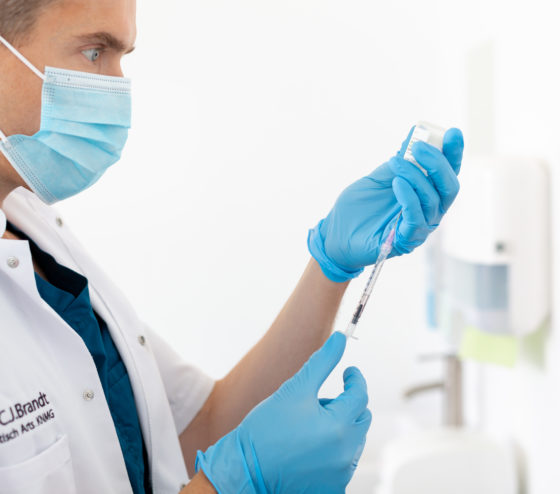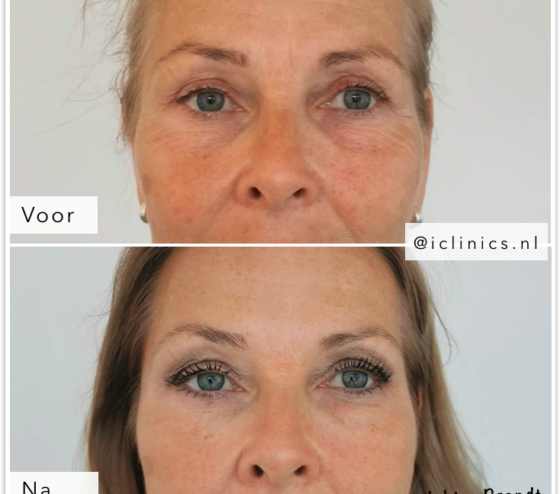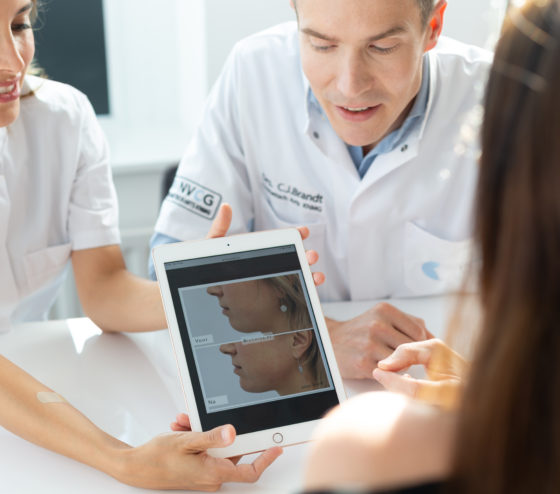What is a Botox treatment?
Botulinum Toxin, commonly known as ‘Botox,’ is a natural protein that can relax muscles causing wrinkles. By relaxing muscles such as crow’s feet, forehead wrinkles, or frown lines, the skin smoothes out, and wrinkles soften as if melting away.
The most popular “anti-wrinkle medicine” worldwide has an interesting history. The discovery of Botox dates back to 1822 when the toxin was first described. In 1973, the first medical treatments were performed on people with neurological muscle disorders, such as uncontrolled eye blinking. It was discovered by chance in 1992 that wrinkles disappeared in people who had received a Botox treatment. Since then, Botox became very popular among actors, top models, and others who wanted to stay wrinkle-free for their profession. Nowadays, many more people choose Botox.
What is a Botox treatment used for??
Botox is used not only to soften wrinkles but also widely employed in the treatment of headaches (migraines), excessive sweating of the armpits, and teeth grinding. Additionally, recent studies indicate promising results in combating depression. In the medical field, Botox finds applications among patients with specific muscle and nerve disorders.
How does a botox treatment work?
After the injection of Botox into the muscle we want to relax, the active substance in Botox prevents the signal from the controlling nerve from reaching the muscle, causing it to relax. As the muscle relaxes, the area calms down, and the skin unfolds, making wrinkles fade or even disappear completely. On average, the depth of wrinkles can decrease by up to 90%! A few days after the treatment, you will begin to notice the effect, with wrinkles becoming visibly reduced. The effect of a Botox treatment varies from person to person but typically lasts for 3-5 months. The duration of effectiveness can extend up to 4-9 months if the treatment is repeated on time. During the period when Botox is active, it not only treats existing wrinkles but also prevents the formation of new ones. Due to this preventive effect, Botox is widely used by young adults. Botox is entirely naturally degradable, and its effects are fully reversible.
Botox treatment
Botox is commonly used to soften crow’s feet, forehead lines, frown lines, or subtly lift the eyebrows. In the hands of an experienced cosmetic doctor, Botox can also be used for treating a gummy smile, wrinkles on the nose (bunny lines), wrinkles on the lips (smoker’s lines/barcode), lifting sagging corners of the mouth, or softening wrinkles in the neck.
In addition to these popular cosmetic applications of Botox, there are also interesting medical uses. Botox is often employed to alleviate headaches (migraine), excessive underarm sweating, and teeth grinding. It is expected that Botox will soon be officially approved for the treatment of depression.



